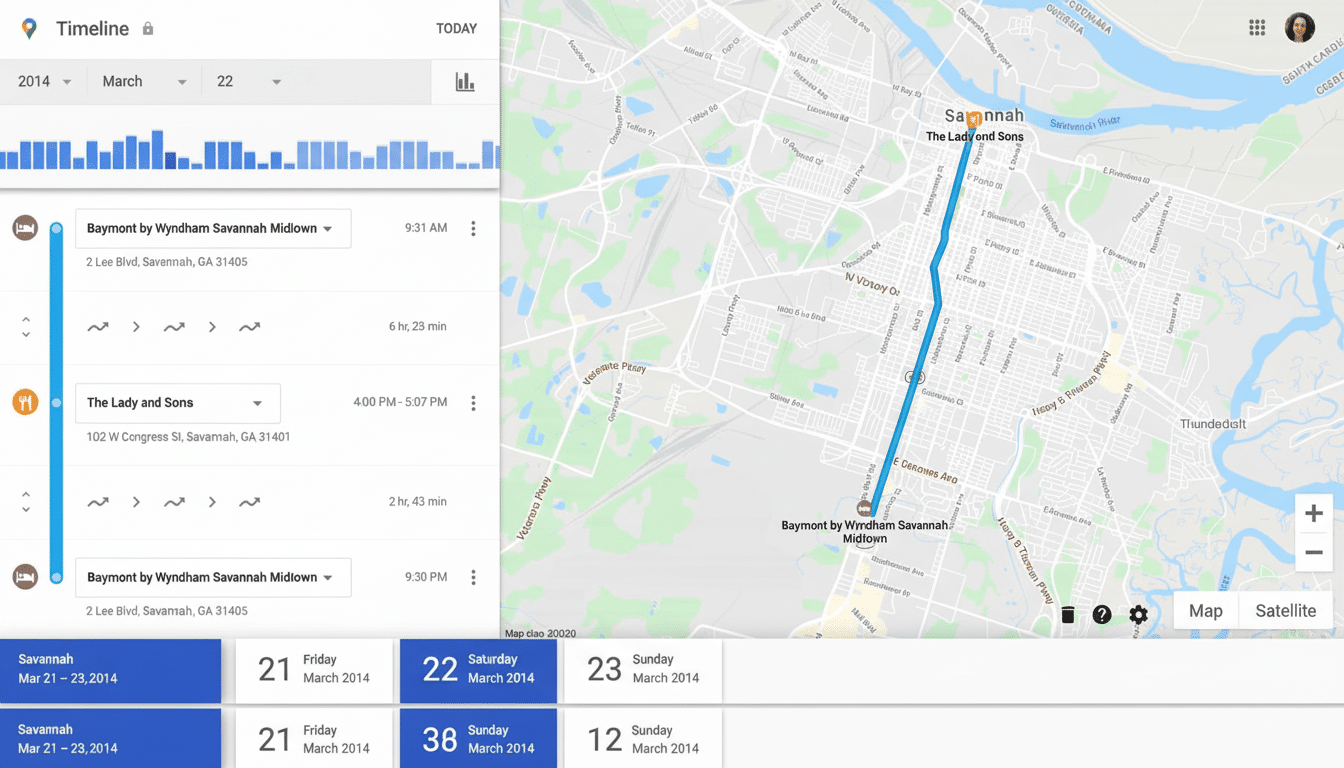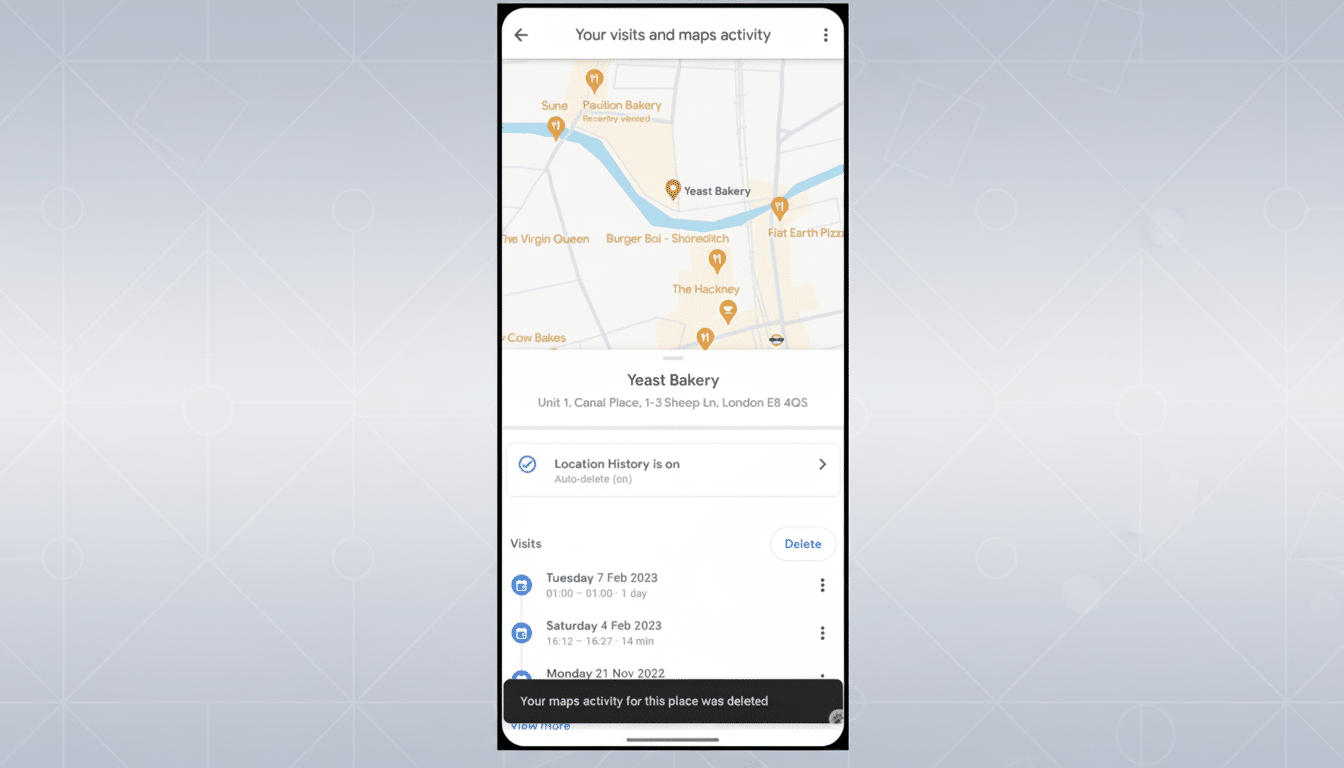Google Maps power users have endured for years now, dealing with a shattered Timeline ever since location history started shifting to on-device storage from the cloud. Old exports, new backups, and trails from multiple accounts just wouldn’t combine. Now, a community-built tool is coming to the rescue with an improbably well-polished solution — and it’s free and open-source.
The web app compiles years of location data into one neat, manageable file by removing duplicates and using a standard format. It’s that kind of pragmatic utility Google hasn’t packed up and shipped, despite a long tail of complaints on help forums and Facebook threads. And for those of us for whom Timeline is an archive of our own lives, personal expense reports, and records of trip highlights, etc., this is a big step forward.

What the Tool Is Actually Doing to Merge Timeline Data
The tool, created by a Reddit user and released as open-source software, ingests multiple Timeline files — the legacy cloud export and the new device-backed uploads. You upload; the app reconciles overlapping tracks, prunes redundant points, and you get one glorious history.
Three export formats are supported. You can use CSV with Google My Maps imports and spreadsheets. KML works well with Google Earth and many other GIS programs. The JSON return gives a simple, portable backup for future processing and analysis. The result is clean and can be plotted right away or saved.
In tests shown to early adopters, years of mixed-account data containing hundreds of thousands of points were brought together in minutes. The app also filters away obvious noise like fast back-and-forth pings that can clog up dense urban tracks, so the end result is surprisingly more readable.
How Timeline First Broke for Google Maps Users
Google moved Timeline toward on-device storage and optional end-to-end encryption to minimize cloud retention. It was a privacy-oriented change, but it resulted in file format changes that caused old and new data to no longer be compatible. The second problem was that users with multiple Google accounts struggled to be able to export everything, and — even if you could — there wasn’t an official way of merging it back into a cohesive history.
The pain points were predictable. Fastidious travelers found their records divided in half. The self-employed and delivery drivers, for instance, couldn’t easily reconstruct their mileage. Those who changed jobs — and accounts — lost that continuity. Though Google’s support pages describe transferring data via Takeout, they do not include tools to help people merge data sets or remove duplicates.
How Do You Use It Without Sacrificing Privacy?
Location history is sensitive. And even anonymized data files can, with just a few times-and-places reference points, be re-identified — as researchers in academia have demonstrated over and over. It is the sort of data that the Electronic Frontier Foundation and other privacy researchers have cautioned against sharing or storing.

(The fact that the developer made the project open-source is a pretty significant safeguard, because if you are tech-adjacent rather than purely tech-illiterate, you can view the code and/or run it on your own machine.) If you are going to use the hosted web app, prune exports only to the years of data you need, remove all named places, and put merged files offline after download. For users who are accustomed to the command line, running the merger on their own machine gives them the most control.
Who Benefits From an Accurate, Unified Timeline
It’s a helpful report that is especially significant for heavy travelers, field researchers, gig workers — anyone who regards their location history as a personal lifelog. One common scenario: a user is in possession of an old cloud-based archive, a new on-device backup, and a separate work account which requires regular mobility. Before, piecing those together took custom scripts or even manual editing. Now it’s largely automated.
There are practical payoffs. Consolidating tracks makes it easier to audit expenses. Routing is better when you can overlay previous routes to find gaps. And for users who are migrating phones or accounts, the merged archive becomes a neutral, future-proofed backup that isn’t locked to a single Google account state.
The Next Steps for Google to Support Timeline Users
The community solution underscores a hole Google should be able to bridge efficiently. An official merge-and-clean tool integrated in the Timeline settings would have given continuity to millions of location history believers. More obvious export instructions, cleaner schemas across storage modes, and a one-click de-dup pass would be much appreciated.
Google Maps claims more than a billion users and only a portion of them opt in to Timeline, but still: the footprint is vast.
With recent crackdowns on location practices and settlements with state attorneys general here in the United States, empowering that kind of user-friendly data control isn’t just good UX — it’s product management that would be seriously disruptive.
Until then, the open-source merger is the disadvantage you can live with. It brings Timeline back to its basic promise: a consistent, accurate record of where you’ve been, owned and controlled by you.

